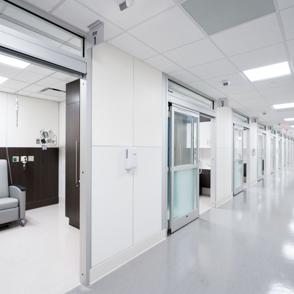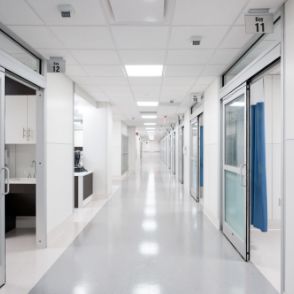When we’re asked, ‘What is adaptive construction?’ we get excited because it means we can talk about the almost-endless benefits of our future-proofed construction solutions.
Adaptive construction in healthcare facilities is essential for creating flexible, efficient and cost-effective environments. As the healthcare sector is consistently evolving due to technological advancements, changing patient demographics and new treatment practices, the demand for adaptable spaces has never been higher.
In this blog, we will answer the question, ‘What is adaptive construction?’ and look at why it’s important in the healthcare sector.
What is Adaptive Construction?
Adaptive construction refers to the use of modular and flexible design principles to create buildings that can be easily reconfigured or expanded as needs change.
This approach is particularly valuable in healthcare environments, where the ability to adapt quickly to new technologies, treatments and patient needs is crucial.
The Importance of Adaptive Construction in Healthcare
Traditional construction methods often fail to keep up with these changes, while adaptive construction provides spaces that can be easily modified without major overhauls, leading to cost savings and minimised disruption.
What are the Benefits of Adaptive Construction?
We’ve stated that adaptive construction offers a dynamic solution for healthcare facilities facing constant change but how exactly does our approach benefit these facilities?
- Flexibility: Adaptive construction allows healthcare facilities to reconfigure spaces quickly and efficiently.
- Cost-Effectiveness: By reducing the need for extensive renovations, adaptive construction helps healthcare providers save on costs and minimise downtime.
- Sustainability: The modular components used in adaptive construction are made of recycled materials and are more sustainable than traditional bricks and mortar. Our processes also reduce waste.
- Futureproofing: Facilities built with adaptive construction are better prepared for future changes.
Implementing Adaptive Construction
Implementing adaptive construction in healthcare involves a strategic approach that focuses on modularity and flexibility. Key steps include:
- Assessment of Needs: What problem is adaptive construction aiming to solve? Evaluate current and future requirements, considering patient demographics, technological advancements and workflow efficiency.
- Design Flexibility: Develop designs that can be easily reconfigured. This includes using modular walls, adaptable electrical systems and movable fixtures.
- Sustainable Materials: Use environmentally friendly and sustainable materials to enhance the adaptability and longevity of the construction.
- Technology Integration: Incorporate advanced technology solutions to support rapid changes and upgrades in medical equipment and services.
- Collaboration and Training: Work closely with architects, designers and healthcare professionals to ensure the project meets all functional needs and complies with healthcare standards. Provide training for staff to efficiently utilise the new adaptive environments.
By focusing on these elements, healthcare facilities can achieve a balance of flexibility, efficiency and future readiness.
Building the future
Adaptive construction in healthcare is a forward-thinking approach that addresses the unique and constantly evolving needs of the sector. Understanding what adaptive construction is and how it can be applied in healthcare is the first step towards creating facilities that are ready for the challenges of tomorrow.
Here at Architectural Wallsz, we are at the forefront of this movement and offer innovative solutions that set new standards in healthcare construction. If you’d like to know more about adaptive construction, contact us today.






Sorry, the comment form is closed at this time.